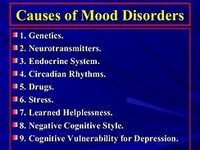
FEVER
FOODS THAT HEAL
WHO’S AFFECTED
Although normal body temperature is generally thought of as 98
6°F (37°C), human temperature may vary over the course of the day by as much as two degrees
Most people can feel a difference in their body temperature that they will call a fever once it reaches about 101°F (38
5°C)
Old School
You must do all it takes to bring down a child’s temperatureNew Wisdom
Making a feverish child comfortable is much more important than reducing feverFever is not a disease in itself but a symptom of an underlying problem, most commonly an infection
A fever is often accompanied by other symptoms, such as sweating, shivering, thirst, flushed skin, nausea, vomiting, and diarrhea
A fever alone does not necessarily require treatment
It is one of the body’s natural ways of fighting disease and should not be suppressed unless very high or accompanied by other symptoms
Nutrition Connection
The following dietary tips will help alleviate a fever: Drink lots of fluidsSweating, diarrhea, and vomiting may all accompany a fever, which can cause dehydration
Drink at least eight glasses of fluid daily
This includes water, fruit juice, herbal teas, and even frozen fruit juice bars
Quickly add fluids for babies
Note that infants may get dehydrated very quickly because they have a large body surface in proportion to their fluid volume
When babies have high temperatures, parents should give frequent bottles of plain water or a commercial infant rehydration product
You can easily make your own rehydrating solution by dissolving ½ cup (118 mL) of baby rice cereal in 2 cups (473 mL) of water with ¼ Tbsp (4 mL) of salt
The mixture should be thick but pourable and drinkable
Don’t starve a fever
If you feel like eating, eat
There is no medical basis for the saying “Feed a cold and starve a fever
” If anything, you need more calories than normal if you have a raised temperature because your metabolic rate rises as the fever rises
Try the BRAT diet
Eat bananas, rice, applesauce, and toast for fever-related diarrhea
When diarrhea is a problem, solid foods should be avoided until the bowels stabilize
Then, small servings of bland foods, such as ripe bananas, applesauce, white toast dipped in chicken or beef broth, chicken-rice soup, rice cereals, or boiled or poached eggs can be eaten
Beyond the Diet
Several strategies can help address feverHere are a few suggestions: Let low-grade fever work itself out
According to some experts, aggressive treatment of a fever may interfere with the body’s immune response
Keep in mind that many viruses and bacteria thrive at normal body temperatures, and thus a fever may be the body’s way of dealing with the virus
Try over-the-counter (OTC) medications
OTC drugs such as acetaminophen or aspirin are recommended for lowering high fevers
However, aspirin should not be given to anyone under the age of 18 without a doctor’s approval; if given during a viral infection, aspirin increases the risk of developing Reye’s syndrome, a potentially life-threatening disease affecting the brain and liver
Get enough rest
Sleep and rest help the body recuperate and fight off viruses
Stay cool, but don’t get cold
Keep the room temperature comfortable, but avoid making conditions too cool, which may cause shivers and in turn raise body temperature
If the fever is persistent, see a doctor
In general, a child or an adult under 60 with a fever above 103°F (39.>5°C) should seek immediate medical attention
Any fever of 101°F (38.5°C) that lasts longer than 3 days, or or is higher than that and is accompanied by severe headache, nausea, vomiting, a stiff neck, a change in alertness, or hypersensitivity to light requires medical attention
Don’t delay treatment for infants and the elderly
Infants under 3 months of age with a fever higher than 100°F (38°C) and adults over 60 with a fever over 102°F (39°C) need medical attention
Importance of well balance diet




